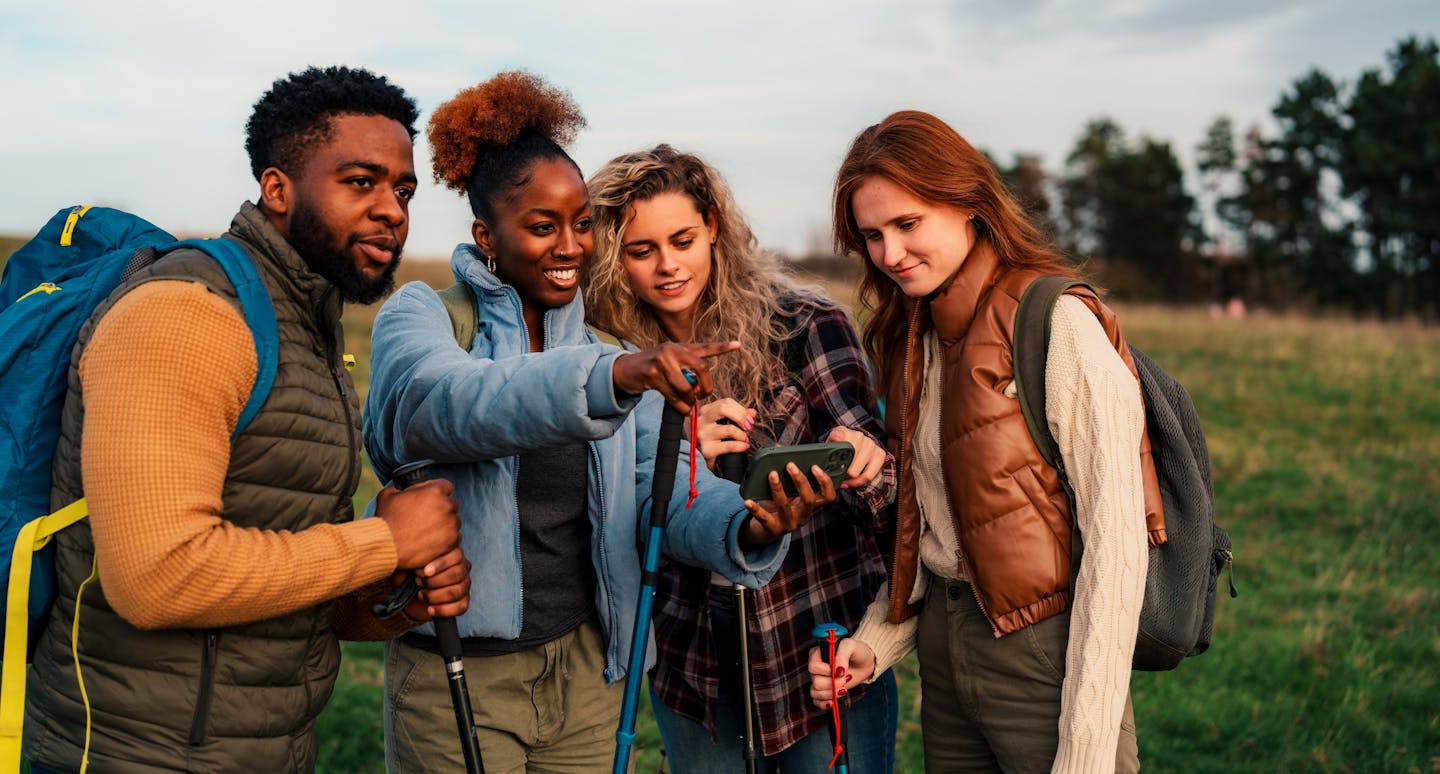
Screens, and technology more generally, are often seen to be at odds with engagement and connection with nature. Teenagers are implored to put down their phones and go outside instead.
This is a key premise in recently announced measures by the UK government to “to re-connect young people with the world around them”. Funding for youth clubs and after-school activities is intended to remedy a situation in which young people are “stuck in their bedrooms or behind a screen”.
Certainly, investment in youth activities, especially those which support young people to build their relationships with nature, is necessary and welcome. But viewing these as merely an antidote to chronic screen use is missing the point entirely.
Screens can be an important part of how young people interact with and understand the natural world. Those screens might be the very key to getting teenagers out of their bedrooms and into the outdoors.
Placing blame
At first glance, it is tempting to place the blame on screens when considering the reasons behind why many people have spent less time outside over the last few decades.
Author and journalist Richard Louv, in his popular book Last Child in the Woods, does just this. He points to time spent watching television and using computers as contributing to a rise in what he calls nature deficit disorder – an ailment related to human separation from nature. Nature deficit disorder supposedly affects physical health and attention spans, among other negative outcomes (though many criticisms exist about this concept).
Alongside suggestions that people of all ages have spent less time outdoors over past decades, mental health difficulties in teenagers have increased in recent years. Technology is often pointed to as one potential driving force. It is important to note that the current evidence appears mixed about whether this is the case.
Given the benefits to wellbeing associated with spending time in nature, it is easy to see how a certain narrative emerges: that teens are suffering from poor mental health because they spend too much time indoors on screens, and this problem could be solved if only they would put their phones away and spend time looking at trees.
Connection to nature – the relationship that a person has with the natural world – is also known to dip in early adolescence (around age 12) and remain low until early adulthood. Encouraging young people to spend more time outside could address this issue, too.
However, when approached with the mentality of “screens versus time outdoors”, this risks being a pointless effort. Technology is central to nearly everything we do, for better or worse. It is not realistic to suggest that the answer to any of these modern difficulties – poor wellbeing, increased screentime, or decreased connection to nature – lies in restricting technology or framing time outdoors as a replacement.
Nature with tech
Instead, technology should be seen to have a role in supporting outdoor experiences. At a basic level, technology helps make the outdoors more accessible for many. Maps, location apps such as what3words and location tracking can ensure people stay safe.

Technology can be used to enable communication for people who communicate differently, such as through the use of iPad apps or speech-generating devices. It can help those with sensory needs feel more comfortable going outside; for instance, using a phone and headphones to listen to music can help block out unwanted sensory stimuli outdoors.
Placing higher value on tech-free outdoor experiences only serves to distance people and gatekeep experiences for those who can easily disconnect. People with caring responsibilities or health conditions, for instance, might find it impossible or dangerous to put their phones away completely when spending time outdoors. In many ways, it is a privileged position to be able to go tech-free outdoors.
Rather than taking an approach that views engagement with screens as the opposite to nature experiences, we should encourage young people to use their technology responsibly to support their experiences with nature.
For instance, phones can be used to identify bird song, plants, and animal tracks or to report wildlife sightings through citizen science projects. Even indoors, looking at photos of natural things, watching nature documentaries, or listening to nature sounds can help support relationships with nature.
Despite the drawbacks of social media, nature content can be an effective way in to experiencing the outdoors for many people. See, for instance, the extreme popularity of Outdoor Boys – a recently retired YouTube channel with 16.5 million subscribers which featured videos of an American man partaking in a range of outdoor activities with his children in Alaska and elsewhere.
With the potential to translate online interests into real-life experiences, embracing the power of nature-based social media content is one way of meeting teenagers where they already are.
People who have stronger relationships with nature are more likely to act in service of the environment. Building upon young people’s interest in the environment can provide opportunities to have frank discussions about the environmental effects of the technology we use every day. This could include, for instance, the rare earth minerals in our phones or the huge amount of energy used by generative AI.
Taking this more balanced approach will help young people see technology as a potential enabler of their experiences with nature.
This article is republished from The Conversation, a nonprofit, independent news organization bringing you facts and trustworthy analysis to help you make sense of our complex world. It was written by: Samantha Friedman, University of Edinburgh
Read more:
- Period pain and heavy bleeding linked with lower school attendance and GCSE results – new study
- How to give children the freedom to play all across the city – not just in playgrounds
- Teenagers are choosing to study Stem subjects – it’s a sign of the times
Samantha Friedman does not work for, consult, own shares in or receive funding from any company or organisation that would benefit from this article, and has disclosed no relevant affiliations beyond their academic appointment.


 The Conversation
The Conversation
 Local News in Florida
Local News in Florida KLCC
KLCC Omak Okanogan County Chronicle
Omak Okanogan County Chronicle America News
America News Green Bay Press-Gazette
Green Bay Press-Gazette Associated Press US and World News Video
Associated Press US and World News Video AlterNet
AlterNet CNN
CNN The Atlanta Journal-Constitution Things to do
The Atlanta Journal-Constitution Things to do